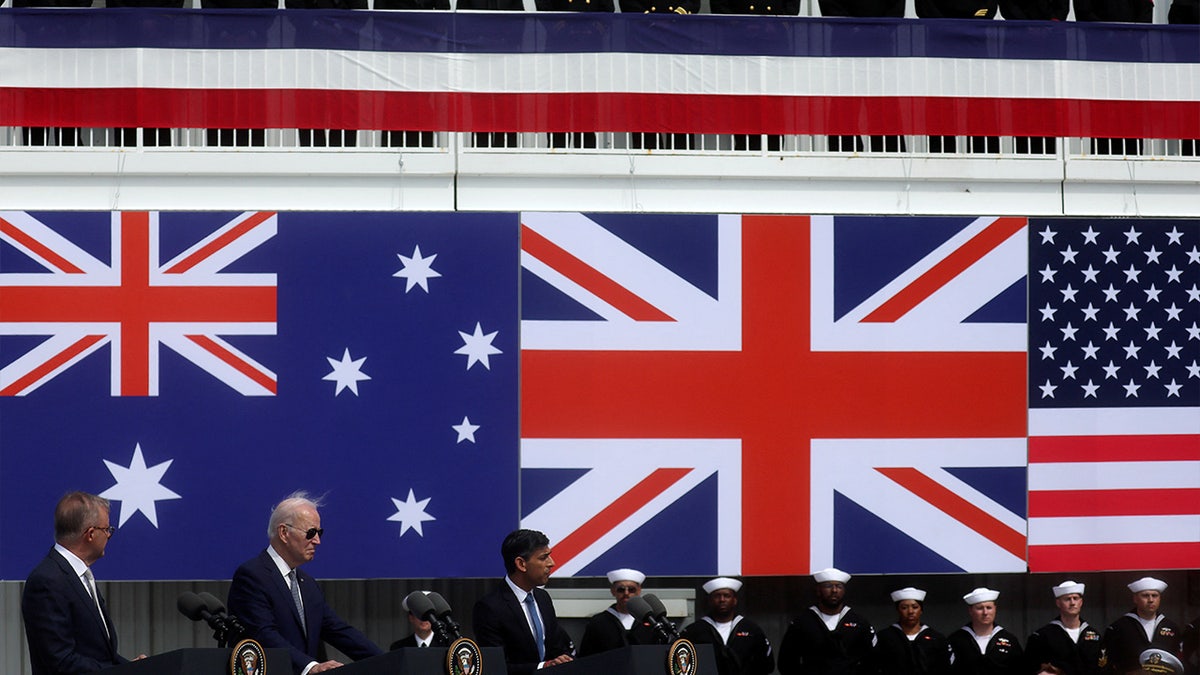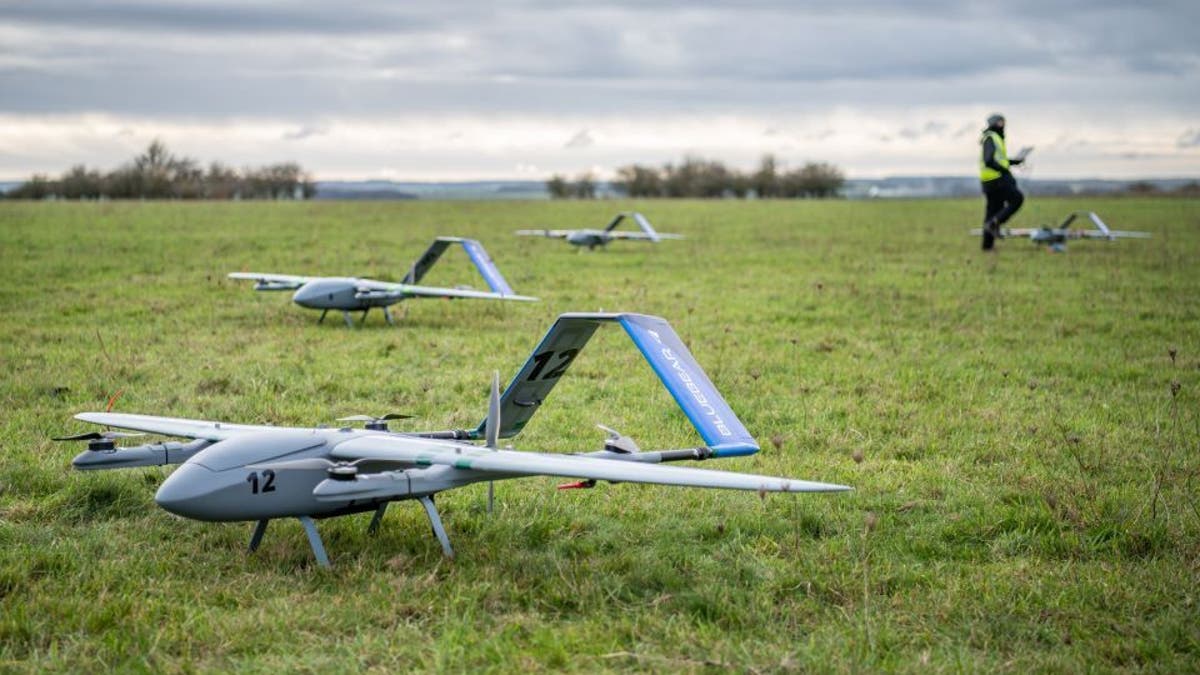Artificial intelligence gives us reasons to be both 'excited and worried': Ethan Mollick
UPenn Wharton School associate professor Ethan Mollick weighs in on the Biden White House's new guidelines for artificial intelligence in the workplace on 'Fox News Live.'
The latest technology integrating artificial intelligence (AI) with unmanned aerial vehicles (UAV) in "contested environments" has passed the test following trials conducted by the U.S., U.K. and Australia's military alliance, AUKUS, officials said Friday.
According to all three defense agencies in the alliance, the cutting-edge sensing technology was put to the test to determine whether UAVs could "complete their missions and preserve network connectivity" across multi-domain battlespaces, including land, maritime, air and cyberspace.
Under Pillar Two of the AUKUS agreement, all three nations are working to "harmonize" AI technologies for defense and security applications, largely in the face of growing Chinese aggression in the Indo-Pacific.

President Biden, Australian Prime Minister Anthony Albanese and British Prime Minister Rishi Sunak deliver remarks on the Australia/United Kingdom/U.S. partnership, after a meeting at Naval Base Point Loma in San Diego March 13, 2023. (Reuters/Leah Millis)
HOW THE US USED AI TO TAKE ON THE TALIBAN AMID DRAWDOWN
According to a release from the Department of Defense (DOD) Friday, the AI-UAV integrated technology is intended to "minimize the time between sensing enemy targets, deciding how to respond and responding to the threat."
"Once matured and integrated into national platforms, these new sensing systems will yield more reliable data that commanders can use to make optimal decisions and service members to act more quickly against kinetic threats — all while enabling seamless joint and combined military operations involving multiple services and nations," a statement by the DOD said.
One example of a system tested in the Resilient and Autonomous Artificial Intelligence Technology (RAAIT) trials was the use of a map-based application known as a Tactical Assault Kit (TAK).
The software helped a British UAV detect the location of adversarial forces by using "on-the-fly adjustments" that were based on data it collected in coordination with a separate UAV that provided detailed imagery.
AI ADVANCEMENTS CAN BE BOTH A TOOL AND A THREAT, CYBERSECURITY OFFICIALS SAY
The coordinated information was then sent to an "AI officer" in the Tactical Operations Center (TOC), who provided human oversight before an Australian XT-8 UAV could be triggered for strike use.
"It used to be that each nation used its own datasets to develop separate models and deploy those models on their own platforms. Under RAAIT, we’ve matured the AI pipeline, focusing on interchangeability and interoperability, which allows for any combinations of datasets, models, algorithms and platforms to be used across all three nations," Kimberly Sablon, principal director of Trusted AI and Autonomy (AIA) in the Office of the Under Secretary of Defense for Research and Engineering said.

The AUKUS alliance handed control of a drone swarm to an AI program to test its observational capabilities. (UK Ministry of Defense handout)
CLICK HERE TO GET THE FOX NEWS APP
The "lessons learned" from the joint trials will be used to create an "AIA ecosystem" that can be employed for operational use by all three nations.
"Our goal is to get to the point where we have a pipeline that is interchangeable and interoperable but robust," Sablon said. "Being able to collect data, train our AI systems, conduct testing and evaluation and even adapt to unanticipated threats in less than 10 hours at the edge is a huge milestone for our partnership."





















